|
Many Artists in the Voice & Land Exhibition provided words or poems with their work, here is a selection of these in a downloadable PDF.
0 Comments
 Catalogue Essay by Holly Ward As with all of todays' living creatures, Mat Glenn and Lucas Glenn’s lived experiences simultaneously straddle the seemingly incompatible spheres of the physical and the virtual, the natural and technological, the ‘real’ and the simulated. As contemporary subjects, our corporeal existence anachronistically bounds us to our physical environments, however mediated this experience and this environment might be. Performing wage-labour, crossing geographical terrain via combustion engines, consuming genetically modified plants and animals; daily interactions and activities are mediated by human systems that have completely transformed direct engagements with the physical, or ‘real’ world. And yet we rely on our bodies and on these natural systems entirely. While technocrats like Elon Musk may want us to believe otherwise, there is no viable life on Mars. We have only the real world. But what is the ‘real’ world? When the distinctions between innate and artificial intelligence are increasingly difficult to discern, when ecosystems self-regulate in response to human technologies, when the rate of change for both ‘natural’ and virtual systems seems to be increasingly immeasurable, any attempt to distinguish between the ‘authentic’ and the constructed, the ‘natural’ and the unnatural, merely reflects an arcane or nostalgic world-view. The simultaneity of mass extinctions and Quantum computing seems to indicate that what exists is a hybrid, increasingly complex system currently in a state of accelerated change. Just as certain physical phenomena cannot be ascertained by human consciousness, these rates of systemic change have seemingly accelerated beyond that to which Human cultures can (or are willing to) adapt. In other words, today’s ‘real world’ is, in fact, a ‘wicked problem’1. In Equipment Space, Mat Glenn and Lucas Glenn’s creative outputs recognize this wicked problem through a series of polymorphous strategies that articulate their perceived location in this contemporary context. Sculptural assemblages merging the human and non-human, animal and vegetable, digital and analogue, explore themes central to their work such as precarious labor, ecosystems, technological interfaces and hybridity. Equipment Space locates our (both human and non-human) collective immersion in this hyperspace between the real and the virtual. Sculptural assemblages featuring humanoid figures, fossil-fuel powered vehicles, live plants and computer-generated fantasy worlds address the circular logics of the neoliberal technosphere (wherein ‘limitless growth’ of resource extraction and alienated labor confront the material limits of bodies and environments). Equipment Space asks us to consider the physical, material and conceptual boundaries of our worlds, the limits of our experiences, and the possibilities of our collective future. Notes:
…a problem that is difficult or impossible to solve because of incomplete, contradictory, and changing requirements that are often difficult to recognize. It refers to an idea or problem that cannot be fixed, where there is no single solution to the problem; and "wicked" denotes resistance to resolution, rather than evil. Another definition is "a problem whose social complexity means that it has no determinable stopping point". Moreover, because of complex interdependencies, the effort to solve one aspect of a wicked problem may reveal or create other problems. Source: https://en.wikipedia.org/wiki/Wicked_problem, last accessed Mar 7, 2021 Learning Connections Download our Learning connections exhibition guide for Made By Hand. This 12 page PDF has suggestions for learning opportunities. connected to the exhibition. Want more information or ideas on how to explore Artist vs. Artisan? Contact Pippa & Alison at the ArtHouse Virtual Gallery Tours
Want to book a virtual tour for your students or community group? Contact our Community Engagement Coordinators by EMAIL Poem by Cherie Hanson
Are You Seeing What I Am The 50-year-old in California wants to do some kind of online kink. I cannot be shocked because I laugh too hard. What do I do? I am curious but don't ask. Punch my own face with my fist while you watch? The dating coach I paid for told me to put up pictures full body view wearing a red dress and others with activities I love. So holding a book in front of me with only the red hair tangled beyond the cover is perfect. I state in fifteen ways to Sunday I am a student of Buddhism eschewing drink and drugs and hunting. killing fish and board games. I state in fifteen ways to Sunday I seek a literate man a man in love with thought, his mind curious like a hound pushing through obscuring tall grasses following a scent. And always I get "You are hot." This is not a conversation opener, I think. My possible responses lead nowhere. "Yes baby, you bet your anonymous ass," or, "Oh I am so grateful for your refined attention." The carefully crafted and edited profile has too much information most of it intended to deflect, defend, disarm. Inevitably the first message that arrives is "Tell me about yourself." I answer, "It is all in my profile." "Oh, " the ninety some men reply, " I didn't read it" Cherie Hanson Blog When you set forth in words like this, it’s not as if you will the words to a final logic so the words become a simulacrum of something---the way a photograph seems to stop time, or a portrait copies part of something. It’s that you trust the words, like music, by starting out in the earth ground of the body, in the concrete field the body is registering around itself, will move into both the body and that electrical field around it, and by some bizarre circuitry, reach beyond both to that other matrix that is also there, that resists ordinary logic, that rushes the heart and the mind and surprises both, and is as close as we can get to saying what the breath of being is. So it’s not that the words copy. They are set forth babbling, as probe. They find things. They open things up. They become something. […the young woman feeling sorry for me in the bakery earlier, forgiving me my awkward lack of confidence in her words, her language, and grinning at me so generously beyond both sets of words, she restored me to the bakery, pulled me back into my body standing in front of her from a point of view that was from farther on down the line, when I was already looking back at this moment and making fun of myself in it, full of swagger of course, the traveller. The raconteur. She rescues me from that and insists on placing me here, now, in this garden, my feet on the ground, her many gestures a cubist blessing from all sides simultaneously. Who would have thought that when I was starting out here? This is no trip into the ordinary…]
From the Ekphrastic Poen catalogue: words (above) by John Lent, painting (below) by Jude Clarke 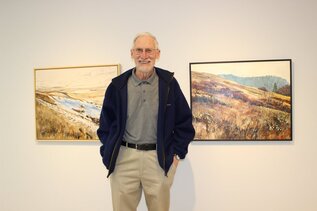 Distance beckons us Horseback ride to the mountains Blue, crisp, winter chill an ekphrastic peom by Shelley Thompson in response to a painting by John Waite
Review of Art Show at Lake Country Gallery. Written and contributed by Sandra Kessler
A lovely/lively art show opened on Saturday – March 7, 2020 at Lake Country Gallery. It was called “Ekphrastic Poetry” - which is a Greek expression – meaning giving words to images. Four separate artists have work in this show. Liz Earl, Michael Griffin, John Waite and Lois Huey- Heck. Liz was on holiday in Mexico so wasn’t actually at the opening. The others had a chance to share their experiences and the making of art. Liz’s work was compelling and I admire the depth and perspective shown in the landscapes, as well as the facility with which she expressed the floral details.. Buildings, landscapes, people – she doesn’t shy away from any subject and the attention to detail – as is in evidence in, for example, the wrinkles in the clothing of the people in a line up at “The Lunch Counter” and the depth in perspective in the space in the Bedford Mills piece. Michael Griffin’s work is gestural pen and ink and wash – bodies and 2 portraits. Clean and pure rendition – with an economy of expression. He gave an interesting talk about the pieces and the theory about the Ekphrastic Poem. The brochure on this show talks about making an Ekphastic poem. - pick an artwork from the exhibition - start a conversation with artwork – ask questions, invent a response. - reflect on details in the work. - tell a story The poem can take on any form, haiku, limerick, sonnet, narrative – you decide. Lois Huey Heck has an amazing array of work – 12 to be exact - executed on yupo paper which is a sort of synthetic base – it allows the movement of colour and is slow drying so not confined by time. Primordial influences and as she says, “microcosm/macrocosm” – evident in the powerful images. Her wonderful strong colourful renderings with so much energy and/or delight in the vibrant colours. The clean, spare, venue allows the work to be of utmost attention allowing each to speak its truth. John Waite’s work is in acrylic on canvas – mostly landscapes. Interesting sense of time and the value of a work in progress. His memorable quote, “ If it feels like something I have already seen, then it is time to change direction”. Sandra Kessler contributed by Cherie Hanson Feb 29, 2020
I have come to realize I have a relationship with art and with cultural events that is central to my sense of well being. As I do in all relationships, I step back and analyze the dynamic with a curious mind. What I seek from art is a transformation of self. I stand before a painter that was looking at his concept reality in 1400 and I feel as if I have stepped into his very mind. This was the world he inhabited; these were the beauties of mundanity that surrounded him. What appears on the canvas are the objects limiting and expanding his very sense of his own humanity. And it deepens my understanding of what it means to be mortal beyond the boundaries of my own culture, current normative habits and constructs. When I watch a choreography that is precise, unexpected and paced just beyond my ability to perceive it, I feel more flexible. My understanding and ability to behold the eternity of the performance is being challenged. It wakes me up. I find myself holding my breath. To hear poetry or a film script that is just beyond my capacity to follow the words, puts me in a state of alertness. I am panting after the patter, forced to keep up, to keep alert. When I see a play and the acting, directing and intelligence of writing is so beautifully beyond that which I knew previously, it can shred my sense of confining comfort. The tightly locked up ideas of who I am are released. I am forced to the identity of the characters. I am that person. I inhabit that kind of grief. That particular rage is within me. I will have unanticipated tears flow. The sense of deep humanity and the fragility of living a life sweeps over me. Perhaps, I am shocked or horrified or taken like a captive ripped out of my own repetitions of understanding. Good art over-takes who I am in normal life and drags me to a hilltop where I now have a greater purview of the entire landscape of being born into a body. This moment in front of a painting, or dissolving in music, or listening to an actor channel the narrative of slavery destroys me. All that I have known is exploded and the intensity of something so much greater than myself floods through me. I fall in love with the created piece of art. I fall in love with the artist who can hold and transform that electricity. It is such an act of bravery to grab the wire and allow the self to be used to transmit energy. I fall in love with the earth, my body, the shared humanity of all of us. For me, great art is about connecting to passion. It is about allowing the small self to be reformulated through an experience. I am renewed. I understand now: To be human is an act of incalculable courage. An artist taught me that. Original Blog post at: http://cheriehanson.com/?p=5175 From blog post by Okanagan Author Leigh MacFarlane
[..] I attended tonight out of curiosity to see how a smaller, local gallery handles an opening, and I was impressed. It appeared to me that they solicited a decent turnout, and they offered an array of finger food that easily equalled the selections at my former gallery. I had a nice chat with gallery manager, Petrina, who remembered that I had left my former job and asked me about my current life — full-time writer for two more weeks then back to part-time writer, part-time employee collecting paychecks. I thought it was classy that she would ask after me even when she was hosting an opening. She made me immediately glad I had decided to come. The exhibit that opened is called Cloth Culture, and features, “Six contemporary artists [who] explore the tactic emotional and experiential resonance achieved through the active labor of material production and bodily awareness.” Reading the invitation to the event over Facebook, I gathered that the exhibits would feature cloth in some fashion (pun intended). I wanted to see for myself how the artists would handle their medium in order to achieve their message. Even though my visit was brief, I came away intrigued. Creativity always has that effect on my brain. The exhibits were varied, some binding garments fashioned into bolts of cloth together in imitation of various recognizable objects, others more abstract in intention. My personal favourite was the simplicity of the long suspended swath of fabric (linen, possibly?) which had been painted in bold strokes with fluid black smears of paint then draped from ceiling to floor along one wall. I also appreciated the weave of wool, as well as the crinkled design of ribbon and bow-embellished paper. That one had so much texture and variance built into its construction that I had to study it in detail for several minutes before getting any sense of what I was observing. For instance, I first missed the chocolate liquors which had been inserted into the pattern of the work. I also took awhile to see the ivory sewing pins fastening the art to the preserved tree branch from which it hung. [...} I don’t know if I left the gallery thinking about the relationship of working with cloth to attain body awareness. That was there, but for me, that was a background note. Instead, I left thinking about the impressive way some people have of taking simple, basic materials and re-imagining them into art objects which make a statement. I left thinking about the way art has of creating differing impressions on the psyches of each individual who views them, and about the beauty of transmitting meaning and inspiration in such a fluid fashion. I left thinking about how art works in simplicity and intricate detail with equal power. Hanging in the window at the gallery is a large cloth hand. From inside the gallery, this was simply suspended fabric which mimicked the flimsy material of a woman’s glove. From the other side, though, when the light from the gallery shone through the material, a shadow world could be seen. Inside the glove was a world of intricate detail which I won’t describe — I’ll leave that for you to discover on your own. After studying those shadows, I left. I’m a writer, not an artist, and when I feel inspired, words are my medium of expression. When I slipped out the door, though, I left reminded that in order to really see, you have to take time to truly look. A surface, cursory glance is only stage one in the experiences of life, and of art. I recommend a visit to Lake Country Art Gallery and Cloth Culture. There you will find shadows under cloth, fluidity of pattern and space, the intricacies of design, and if you take the time, maybe you, like me, will find a moment of contemplative inspiration. Lake Country Art Gallery is located at 10356A Bottom Wood Lake Road. Cloth Culture can be viewed until November 17, 2019. Full article can be found here> macfarlanecreativeleigh 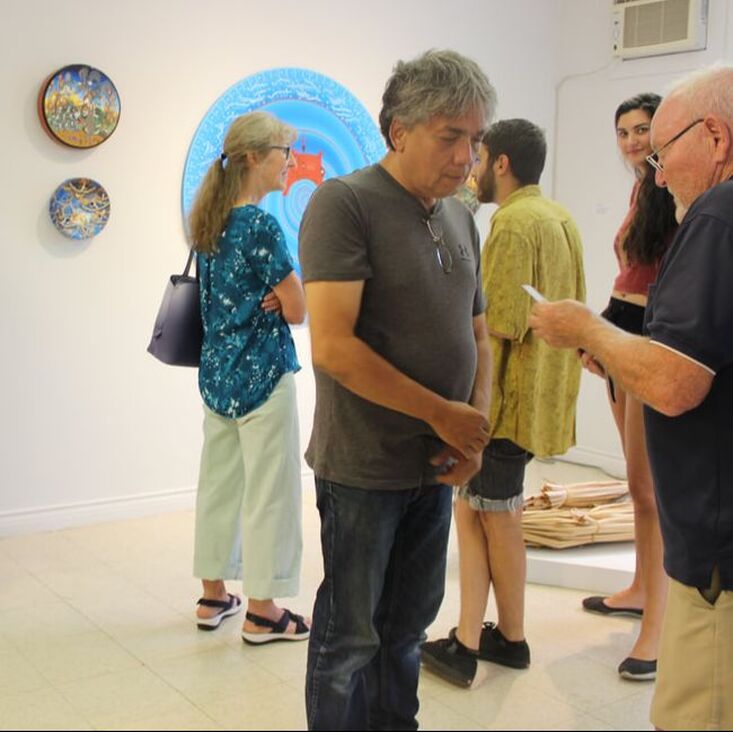 Exhibiting artist and co-curator David Wilson Sometimes life’s little inconveniences lead you to the door of opportunity. One morning I had made the bus trip from Vernon to Lake Country to take pictures of my collaborative mural project with some of the George Elliott Secondary School students that hung proudly on the wall beside the Creekside Theatre. I decided a beverage at the nearby Coffee House would be a good starting point, and it was there I noticed my phone was missing. Wanda Lock, the Curator for the Lake Country Public Art Gallery, recognized me and after chatting she lent me her phone to see if I could relocate mine. Luckily, it had been turned in to the bus driver on duty. All I had to do was wait for the next bus loop. This gave Wanda and me a chance to talk. She said she'd just been thinking about a possible First Nations focused exhibition to showcase our art in a meaningful form of reconciliation and mutual respect. This led to the exhibition called Atklokem: the place where wild carrots grow. Sometimes these little inconveniences lead you to the path of golden opportunities. David Wilson Sookinakin LC Art Gallery Curator Wanda Lock: As part of the Lake Country Art Gallery’s exploration of community I recognize the importance of providing opportunities for a discourse related to the Syilx, the Indigenous people of the Okanagan, and to facilitate discussions about the history and future of the people and this land. My responsibility as the Curator at the Lake Country Art Gallery continues to evolve as the role of the artist morphs and responds to social and cultural needs. The Curator is an enabler, making space and giving voice to artists while at the same time researching and pulling together exhibitions that are stimulating, exciting, and thought-provoking to the public audience. The role of a Curator is not a static one. It is prudent to invite others into the gallery space and to step aside when others can offer more qualified and different perspectives. And who can open up the conversation, break it apart and rebuild ideas. By inviting supporting curators into the Lake Country Art Gallery, we can stay relevant, reflect the times, move forward, and make space for other voices. This process then allows us to respond to conversations that are happening around the Okanagan Valley. We must give voice to Okanagan artists and curators who create work intended to inform and challenge us. These exhibitions make us think about the history of the land and those who have come before us. The Lake Country Art Gallery welcomes David Wilson, to serve as a supporting curator, for this exhibition. Atklokem featured work from Barb Marchand, Mariel Belanger, Sheldon Louis, and David Wilson. Wanda Lock 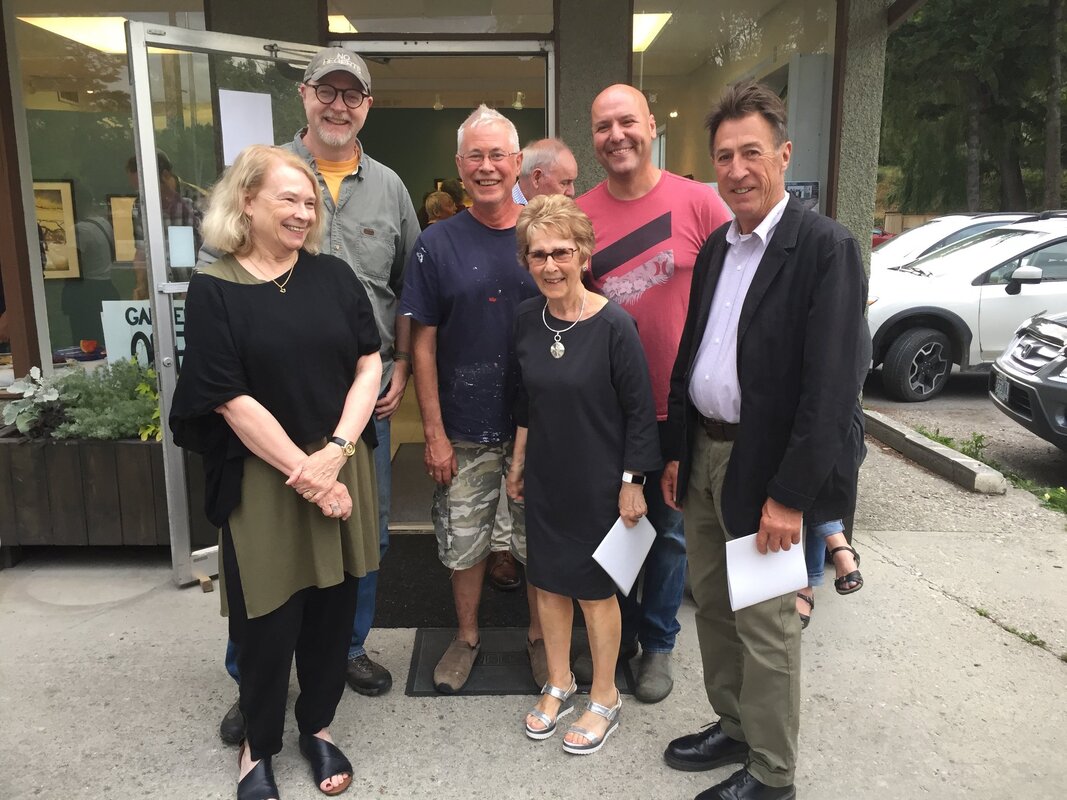 She’s Mary: a tribute to Mary Smith McCulloch from Carolyn MacHardy Well yes, there IS something about Mary, isn’t there?! But how easy is it to identify just what that something is? Mary moved to the Okanagan with her degree in printmaking from the Glasgow School of Art just as the Fine Arts Department of Okanagan College was forming, and she became an integral part of this institution and its successors. Mary’s teaching skills are legendary, and I was fortunate to have the chance to team-teach with her for several years and to be a colleague and friend for many. I learned so much about teaching from Mary: she was wise, very fair, and frankly, she was a ton of fun both inside and outside the studio, as the students were well aware. Mary mentored her students, and I think the continuing success of printmaking in this valley has a lot to do with her. She made it important and young artists understood that working with abrasive chemicals, snapping etching plates like they were celery, and feeding paper into presses the size of small farm machinery were all part of a day’s work in the printmaking studio. She was a role model for women in that she combined an active family life with her full time work at the College, and I think it was a very important lesson for her male students as well. At the time we had many women returning to do their studies in fine arts after having started their own families and Mary gave them the confidence to do it. Nor did she ever pretend that it was easy for a woman with a young family to succeed in a teaching career and as an artist, but her recognition of that and her willingness to step forward and make sure her voice was heard on committees at all levels of the College was important for all of us. She has also maintained a steady commitment to the local community, working on many committees and boards, and giving countless workshops to groups in the Okanagan. If I have to think of one work that really opened my eyes to Mary’s teaching and her approach to art, it would be her work from 1982 called Kettle Valley Trestles. I saw it again recently in the home of some friends and was as knocked out by it as I was when it was done. The sheer scale of it, and the immensity of the difficult geography and topography of the scene which she tackled was a powerful demonstration for students and faculty alike of what printmaking can do. The multiple perspectives, and the juxtaposition of battling views of the trestles, first below your feet and then above and to either side of your field of vision, creates a revelatory statement that uses etching to point out how complicated the terrain of this Valley is and how complicated its history is. I understood something about my new home in a way that I hadn’t understood until then: that the Okanagan’s challenging geography, best understood through multiple lenses, has been subjected to ongoing relentless transformation whether by railroads, orcharding, vineyards or subdivisions. So yes, there is something about Mary but I am no closer to being able to say what it is. The more I think about it and the more I write, the less sure I am that I can put my finger on it, or if that is even possible. She’s….. Mary. Carolyn MacHardy Asociate professor, Art History Department of Creative Studies, UBC Okanagan |
Archives
July 2024
Categories |
Contact UsLake Country Art Gallery
|
Join our Newsletter
|
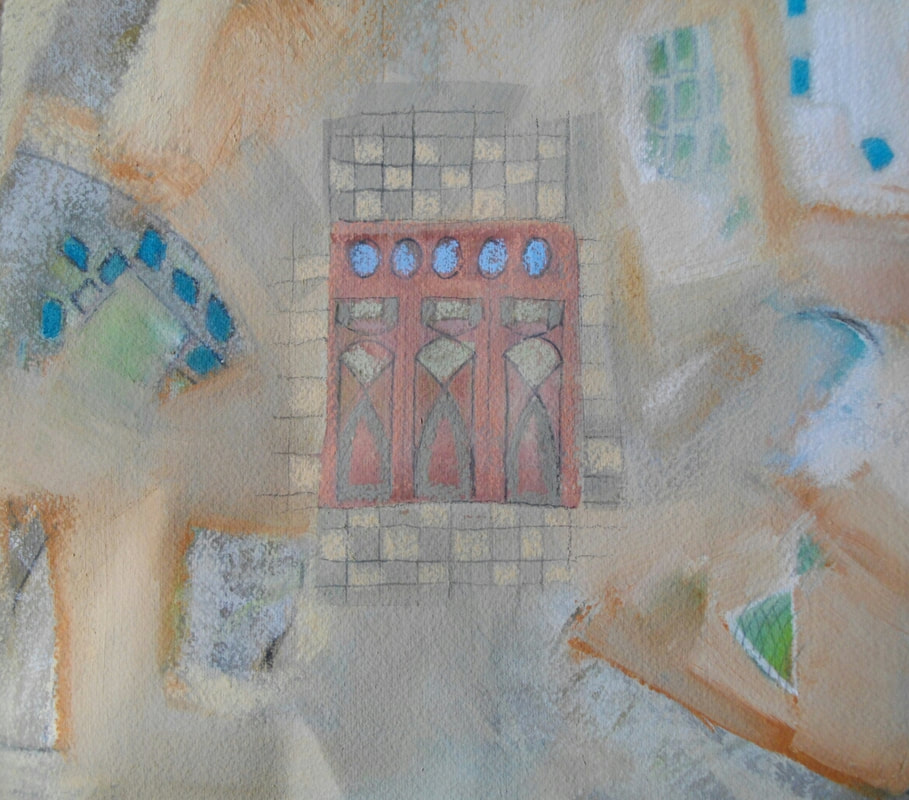
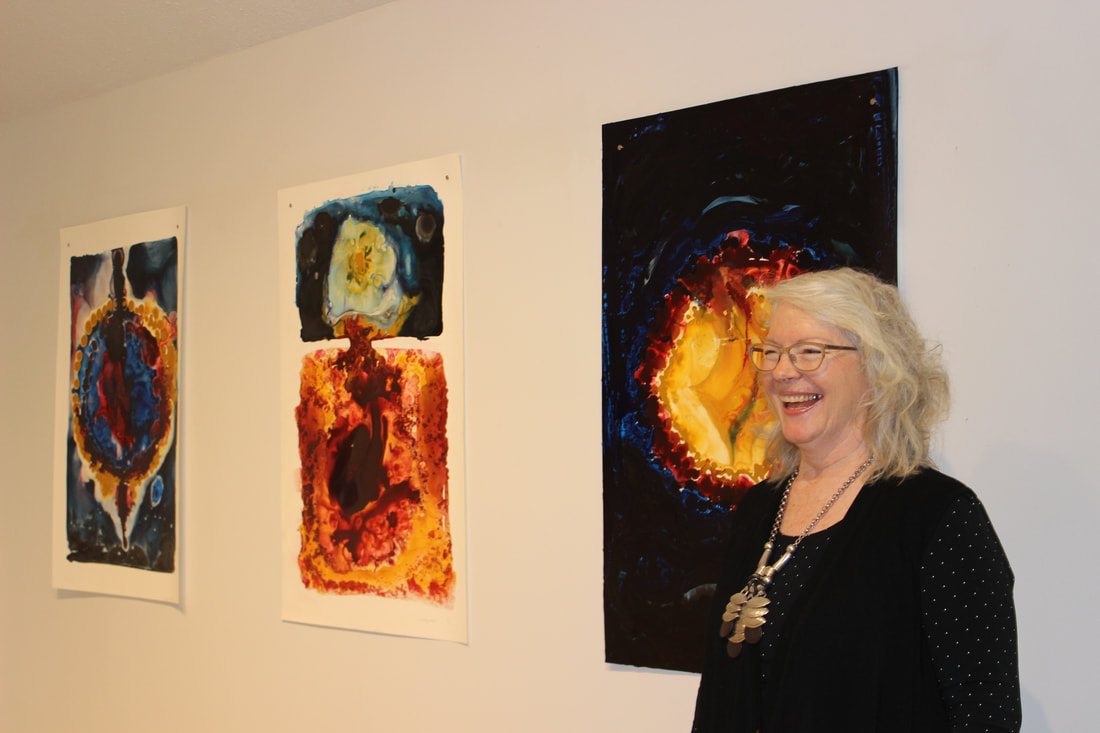

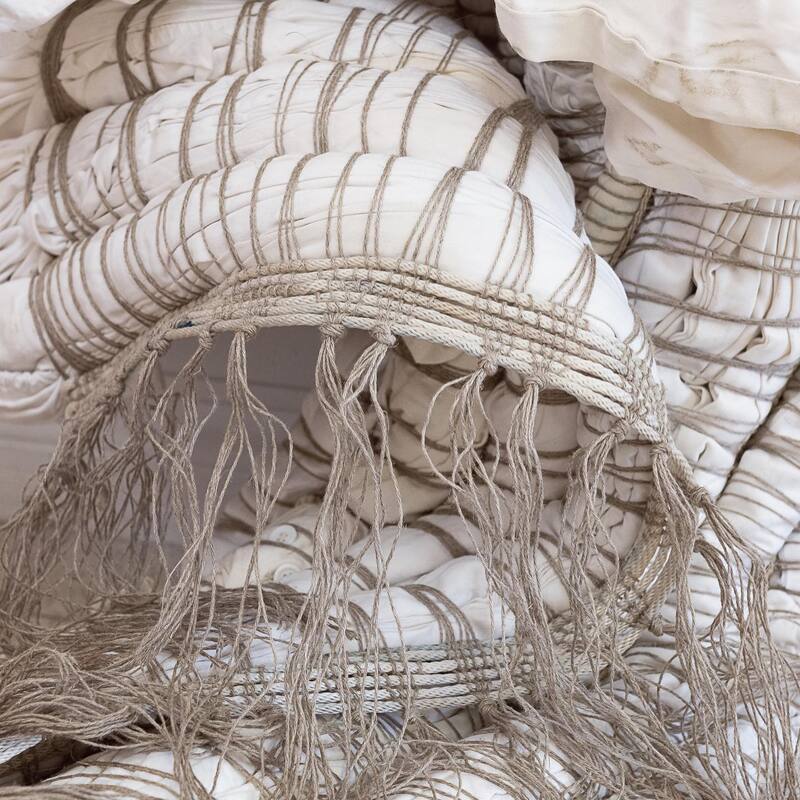
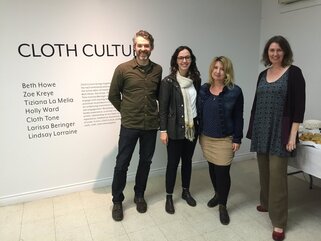
 RSS Feed
RSS Feed

